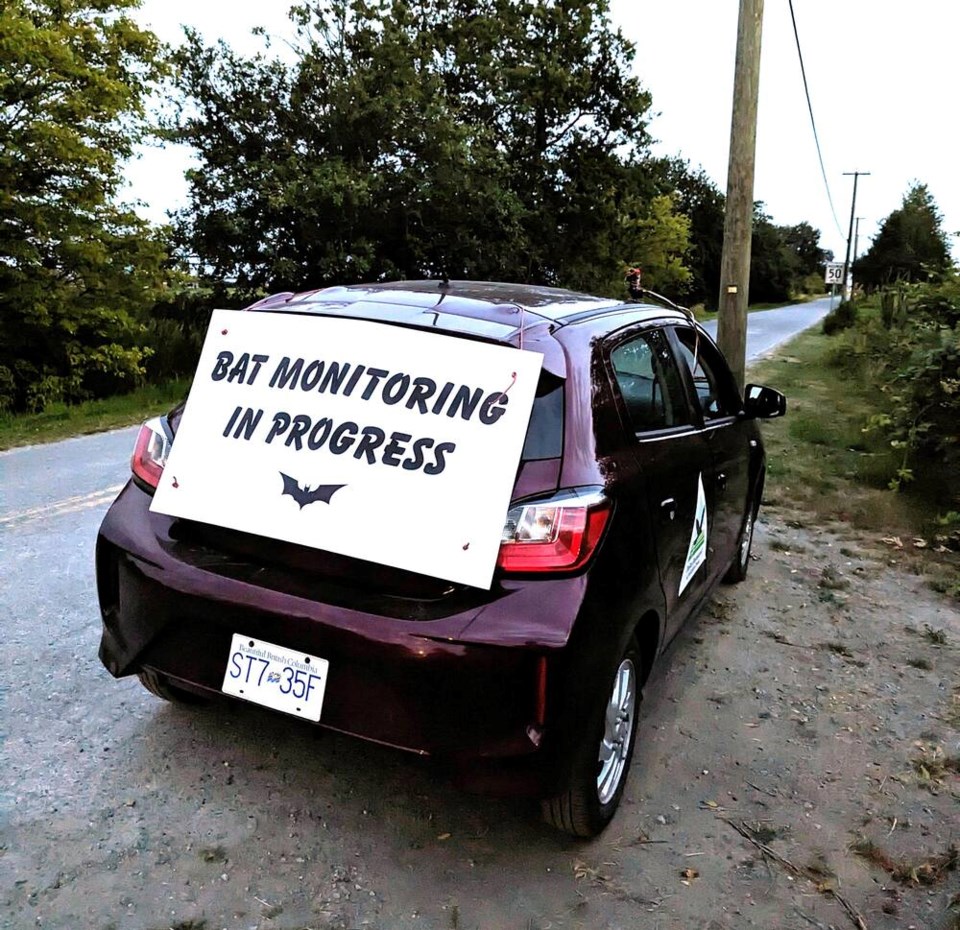As evening falls on Delta’s fields, you may have seen a car cruising slowly down the dusty roads, with someone holding an antenna out the passenger window.
There was no cause for concern though because it was just the local “bat mobile” doing live surveys during the bats’ busiest time of day.
Delta Farmland and Wildlife Trust has been monitoring the animals with an echometer, to get an idea of the number of winged creatures on their night flights. The vehicle travels at 32 kilometres an hour over a pre-set route around dusk when bats become active.
After two hours of survey time on Tuesday night (July 11), more than 150 bats were detected, among them little brown bats and another small bat called, Yuma myotis, said research and field tech Connor Hawey.
Both of those bats are blue-listed in B.C., “We expect to see around eight species of bats in our area and five of which are of conservation concern,” he said.
“We’re really excited to be starting this work for the first time.”
A major goal is to get an idea of the size of the local bat population prior to the arrival of a devastating disease called white nose syndrome.
“We would like to get a picture of the bat activity and population, especially before this disease comes to our area,” Hawey said.
“We’re not sure yet how it will affect our local bats.”
White nose syndrome began in the eastern U.S. and crashed populations there but so far has not shown up in the Lower Mainland, although it’s been detected in Washington state, Hawey said.
White-nose syndrome is a fungus that can cause dehydration, starvation and death. According to B.C. Environmental Protection and Sustainability, the disease has killed more than six million bats in eastern North America.
Bats develop the fungus while hibernating, use energy to wipe it off, and fly around in daylight during the winter looking for water or food. They’ll then die from lack energy.
In order to keep bats from migrating, operators of vehicles should close potential roosting sites to bats at night, such as, cargo hatches, trailers, storage cabinets, tent awnings and umbrellas.
Bats usually emerge after dusk and fly all night looking for food. “They eat massive amount of pest insects,” said Hawey. So far, they’ve surveyed bats in Tsawwassen, Westham Island, Ladner and soon, Boundary Bay.
In all, researchers will have been on the road eight nights, for about an hour each night, with monitoring expected to be completed by this weekend.
Another goal is to see if the Wildlife Trust’s grassland set-aside program, where farmers let natural grasses take over their fields for a few years in order to replenish the soil, is helping bat populations.
Audio monitoring devices that detect bats’ sounds have been placed for six weeks in 12 fields that are part of the program.
“The goal with that is to see how these bats are being supported by the grasslands set-aside program,” Hawey said. Those areas already help lots of insect-eating birds, so they expect it supports bats as well, he added.


